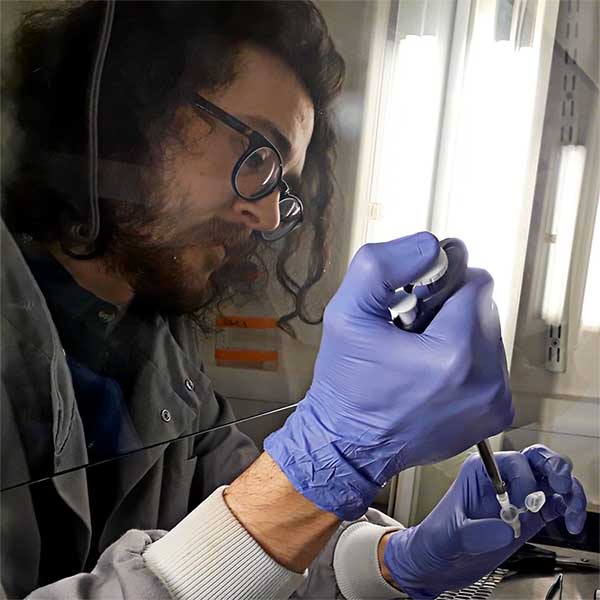Introducing Mr Chris Lovejoy
Photo by Charlie Murphy
What primarily developed your interest in researching Alzheimer’s?
I have had family members affected by Alzheimer’s, which is obviously a big drive to want to understand the disease, as well as help eliminate it. However, the human brain is also just so interesting in so many ways – trying to understand how it works, and also how it goes wrong, is just an amazing thing to research!
Currently, what is the key focus of your research?
I am looking at 3D neuronal models made from stem cells, stem cells which we have made from skin biopsies of patients with dementia. So these cells have all the genetics from those patients, and we then turn them into brain cells. My project specifically is to look at other brain cell culture methods, for example, rather than 2D flat layers of brains cells, I’m making these developing 3D brain organoids that hopefully mimic the human brain a lot more closely, giving us better insights into how neurons communicate and what goes wrong in various dementias.
What has been the most surprising finding during your research career?
It has been amazing to see how these brain organoids develop from 9,000 stem cells into a 1 cm across ball of human brain cells, also mimicking brain development so closely. They make gorgeous images as well as giving us insights into protein functions and mechanisms.
When people learn you are involved in researching Alzheimer’s, what is the main question they ask?
Interesting question – usually they talk about how horrible Alzheimer’s disease is and how it has affected their family etc; as well as how nice it is to meet someone researching it and asking what I do to look into the disease. I’ve even had random people asking me about brain donation!
In your opinion, how important is collaboration and integrating multiple research strategies to help unravel the complexities of Alzheimer’s?
Multidisciplinary approaches to neuroscience issues is definitely a strategy worth employing and usually extremely helpful. Science has become so broad and yet also so specialised, it is therefore always interesting to get other exciting scientists to apply their expertise to a project, or dream up an entirely new idea. Some of the best ideas and technologies come from thinking outside the box.
How close do you feel we are towards making a key breakthrough in slowing the progression of, preventing, or even curing Alzheimer’s? And what is the most important thing to fast track us to this point?
Oh, I honestly couldn’t say. There could be a huge breakthrough tomorrow, or it could be years away. It is very hard to say. But what I can say is more and more papers are being published on neuroscience and dementia every week – more than ever before, increasingly using interesting and new techniques and collaborations that certainly will create new amazing insights into this disease, as well as the human brain in general.
Tell us something about yourself that keeps you motivated and that might surprise readers.
It’s a little clichéd, but one of the two things that motivates me the most is conferences, seeing other groups’ data and ideas, and talking to other scientists about their work, really makes me want to get back in the lab and try out some new ideas! The second is going along to clinics with the clinicians, meeting families affected by Alzheimer’s disease and talking to them about our research.
And finally … is there a question that you’ve always wished someone had asked about your research, but never has?!
Uumm, I guess I’m lucky to be in a ‘cool’ 3D model / neuroscience field, where I’ve been asked almost every question imaginable. Although, I guess I don’t get asked much about the process of making cerebral organoids, which is especially interesting as scaffolds have been introduced into the organoids, so it’s always nice when I get to explain the method behind these amazing neuronal 3D cultures.
Chris Lovejoy is a PhD student in the Wray Lab at the Institute of Neurology, University College London (UK). He is studying Alzheimer’s disease using 2D and 3D neuronal stem cell models (mini ‘brains’ called brain organoids) using skin cells donated by people living with the disease, to try and unravel its molecular and cellular mechanisms.
Find out more about Chris’s research by:
- Following him on Twitter: @CEJLovejoy
- Following him on Instagram: @CEJLovejoy
- Reading an article by Philip Ball from The Guardian.


